Oslo in July: Gay times where the sun never sets on freedom

OSLO — The two couples in matching black-leather police uniforms, complete with vests and leather caps, walked hand in hand in front of us, none of them planning to arrest anyone. A man with a hairy chest and heels that would break a gymnast’s ankle talked with three stunning blonde women. My girlfriend, Marina, wondered where he bought his shoes.
From San Diego to Sydney, Gay Pride weekends are lavish, outlandish affairs that are as much shock value as celebration. But the 10-day Gay Pride in Oslo adds a different element. The public acceptance mirrors the tolerance of one of the planet’s most open societies, one that even surprises my knee-jerk liberal mores.
It wasn’t just gays celebrating. It was moms, dads, children, straight couples, teens. I looked up at the Royal Palace just to see if Norway’s red, blue and white flag had been replaced by rainbow colors.
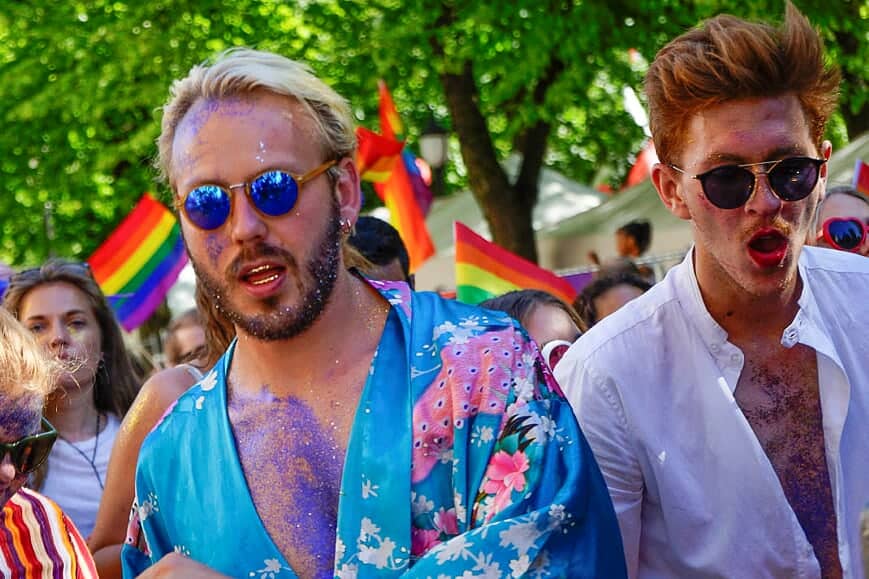
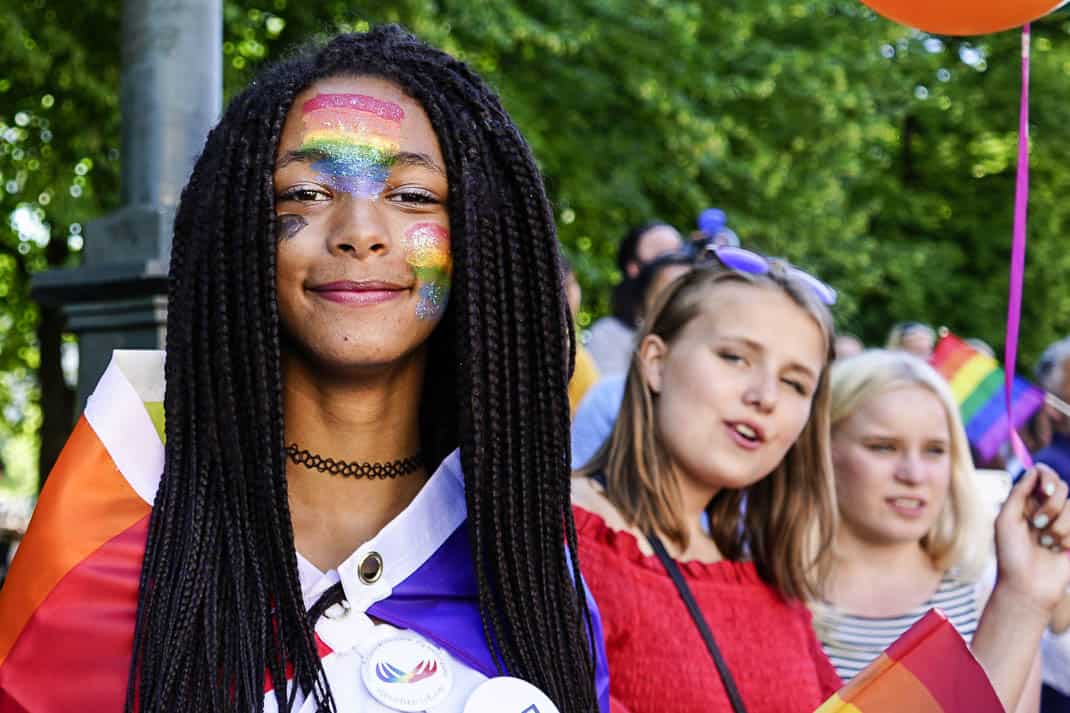
For my latest gift in Marina’s endless birthday celebration, I took her to Oslo for a long weekend. As I’ve written before, July is the worst month of the year, one when travel should be avoided like burning gas stations. But Scandinavia is one of the few places in the world worth visiting in July. The entire weekend was in the low 70s, dry with brilliant sunshine in a turquoise sky seemingly never touched by pollution.
Despite being the peak of its tourism season, an Oslo Pride celebration that attracted 200,000 spectators to its parade and immigration that made it Europe’s fastest growing city in the early 2000s, Oslo’s traffic was nil. We could jaywalk unimpeded. The noise level reminded me of small towns in Kansas.
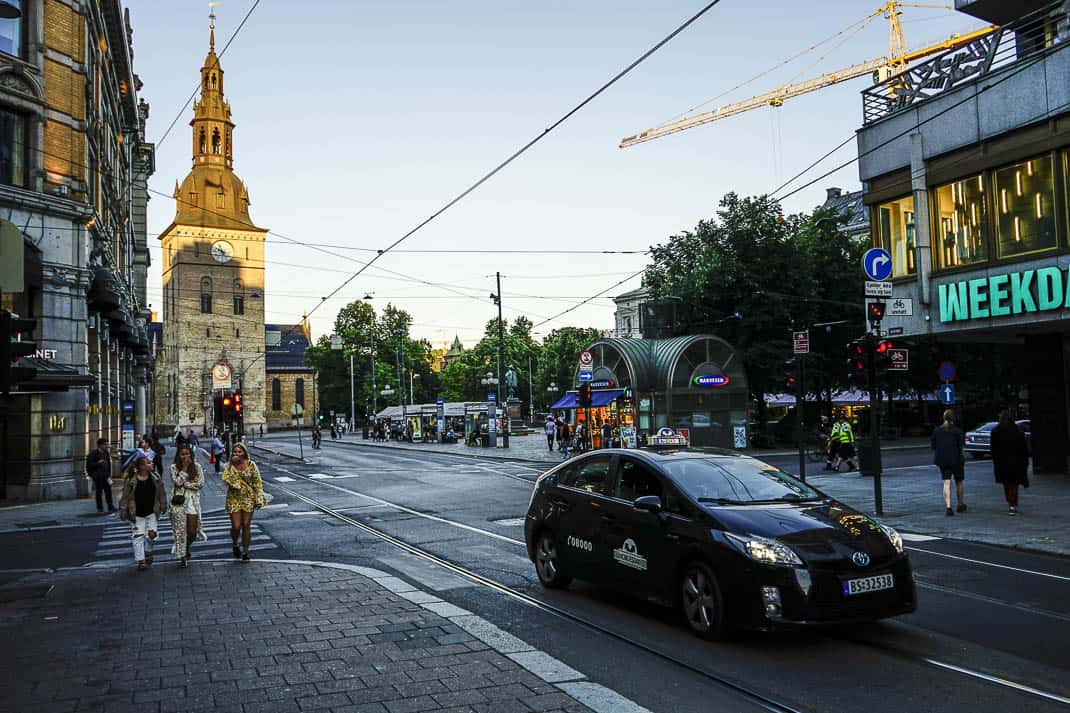
Among international travel insiders, Oslo has become notoriously hip. Its restaurant scene has exploded onto the Michelin list. Microbrews have provided an endless nightlife — and not just because being at the 60th parallel gave us sunlight until 1 a.m.
The Nobel Peace Prize is awarded here with a beautiful museum honoring all the winners. Given the saber rattling by our infantile president who’s always waving his other rattle, its presence looms even larger. Speaking of hated world leaders, an Oslo store even features anti-Trump refrigerator magnets.
This was a gift to Marina but I had to admit. Oslo is in my wheelhouse.
I always viewed Gay Pride parades with hidden nausea. I find men in drag repulsive, even if they are in the minority. Denver’s Gay Pride parade marched by my newspaper office downtown. I barely went to the window. In Key West, I stayed indoors. I accept gays as equals. I’m all for gay marriage. I’ve worked for gays. I’ve competed against gays. I’ve had gay friends. I just don’t want to look at men in women’s clothes.
But what impressed me about Oslo was the reaction. We woke on a Saturday morning and walked along Karl Johans gate, the long walking mall lined with pulsating bars and restaurants. TGI Fridays emblazoned its name on a rainbow flag. Outside the Hard Rock Cafe was a rainbow balloon over a rainbow sign reading “HAPPY PRIDE.” Written on the green facade was “LOVE ALL SERVE ALL.”
As the beginning of the parade approached, I saw couples with children waiting along the street all holding rainbow flags. Young male and female lovers walking arm in arm engaged in conversation with groups of gays in matching outfits. Beautiful women who looked like ski pants models chatted with women who looked like men. For American gays appalled by Trump’s attempt to ban transgenders from the military and appoint people with a history of anti-LGBT stances, Oslo must be heaven, with a rainbow constantly overhead.
Then again, this is Scandinavia. Last year I went to Iceland, a country with only 300,000 people. About 50,000 go to the Gay Pride parade every year. Do the math.
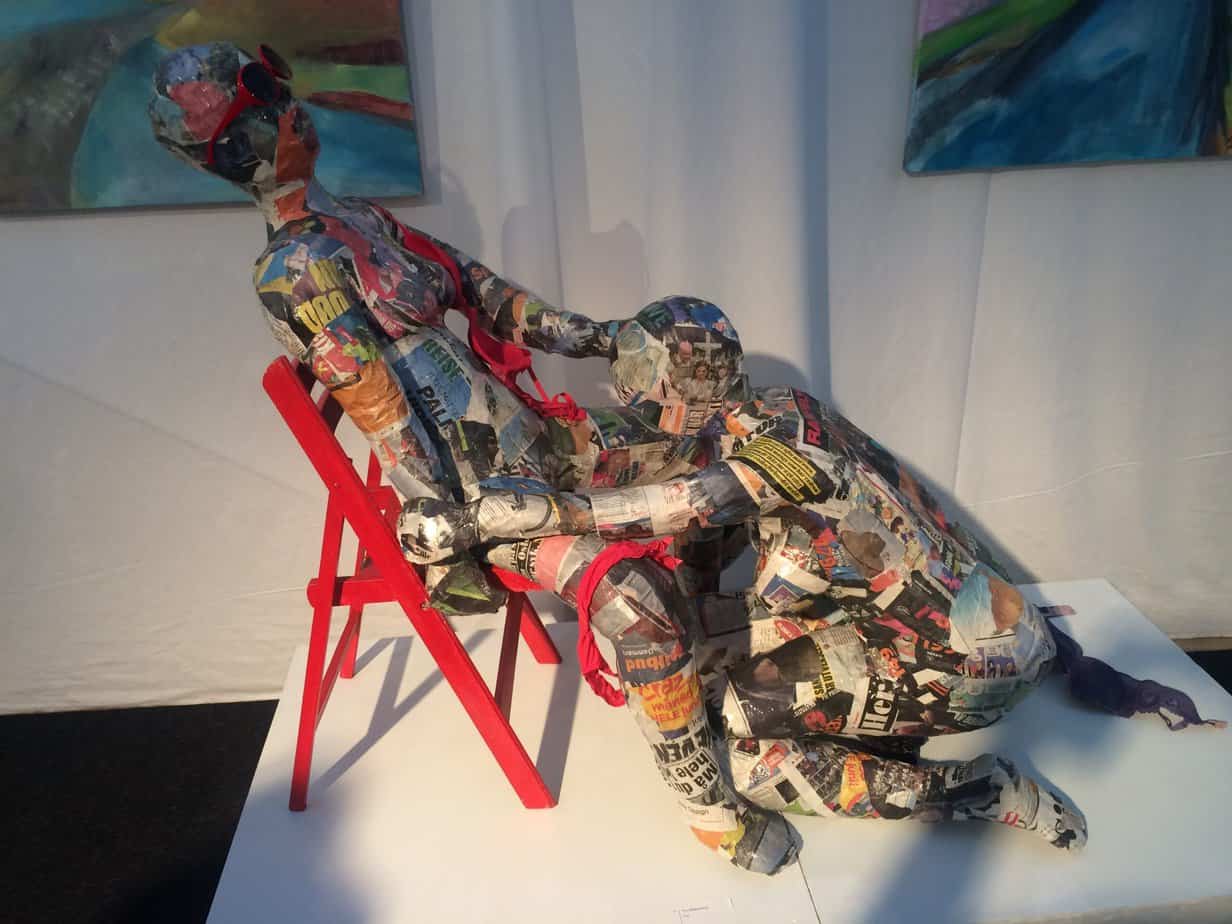
For our first meal we went to Fishtirik, a fish market restaurant where you can buy a whole fish to take home or eat a fish burger at high wooden tables. It was in a large square that had converted a building into a gay-friendly art museum. Featured are two women made up of what looked like papier-mache magazine ads engaging in oral sex in a chair. Over dinner next door we chatted with a young couple about the gays taking over the city for a weekend.
“We’re very accepting,” the man said. “Most of Europe is.”
Prime minister Erna Solberg opened her official residence to celebrate Oslo Pride and lambasted 20 percent of the men in a recent survey saying they were uncomfortable standing next to a gay person.
“We can’t have that,” she said, “so we still have a ways to go in this country.”
Like me, the only people most Norwegians aren’t tolerant of are people who aren’t tolerant. Across the street from the National Gallery is Tronsmo, a tremendous English- and Norwegian-language bookstore featuring Norway’s trendy internationally renowned authors. Near the register stands a bank of refrigerator magnets, one featuring a long-haired orange guinea pig with the words, “DONALD TRUMP’S HAIR FINALLY RUNS OFF TO SEEK A BETTER LIFE.” Another showed a flower and read, “TRUMP IS NOT HEALTHY FOR CHILDREN AND OTHER LIVING THINGS.” In the spirit of the weekend, one pictured a kitten screaming, his mouth and eyes wide open, under the line, “LESBIANS EAT WHAT?!”
That’s not all the bad Trump news for those pandering lap dogs at Fox News. I have more: Shocking as it may be to Trumpettes, Oslo has not set aside a space in its Nobel museum for Trump. Instead, the Nobels Fredssenter on the clean, pretty harbor celebrates all the winners with real accomplishments such as defeating apartheid (Nelson Mandela), banning anti-personnel mines (Jody Williams) and creating a new climate of international relations with the Muslim world (Barack Obama).
Turns out for Trump, shaking Kim Jong-un’s hand in Singapore didn’t quite qualify him.
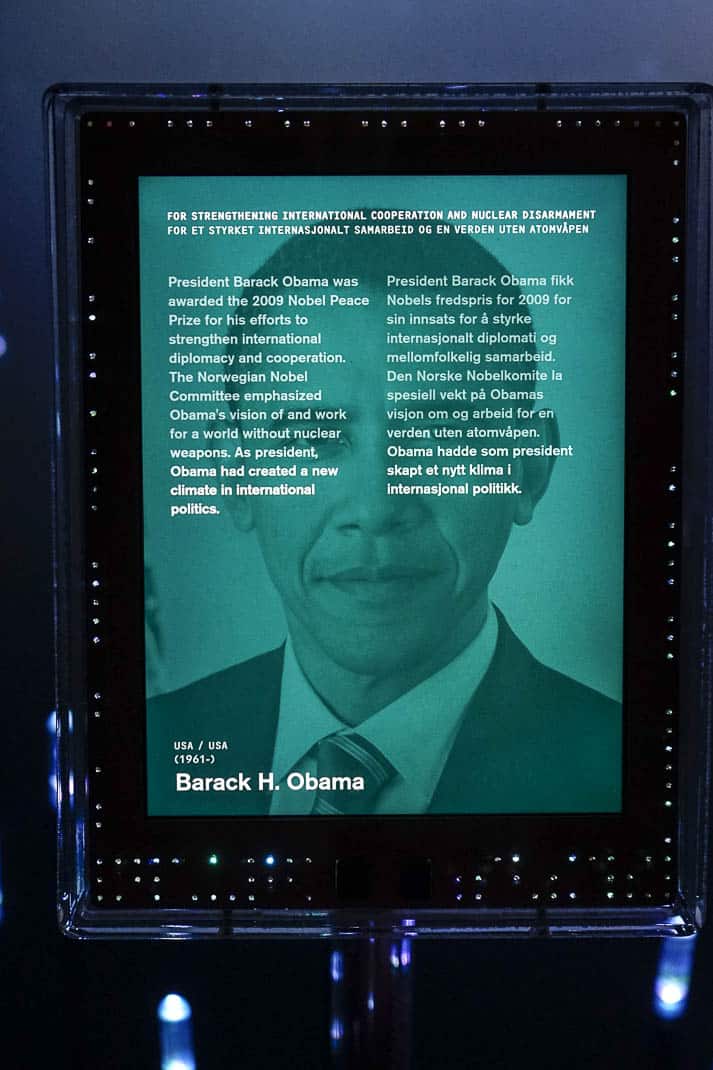
It’s a beautiful museum with each winner featured next to a long description of the accomplishments that got them there. As I walked slowly through this remarkable hall of peace, the loudspeaker issued quotes from the winners, ranging from Martin Luther King to Jimmy Carter.
When I walked out in late afternoon, the brilliant sunshine blinded me. In the summer, Oslo shines like a crown jewel. The colors are as brilliant as in its art galleries. The blues of the harbor. The greens of its lawns. The yellows and pinks and greens of its pastel-colored buildings. The silvers of its glistening harbor-side, glass-walled Opera House. I’ve been here in the winter and in snow it doesn’t lose any luster. It just loses light.

(Bonus bad news for the Trump Administration: Contrary to Trump’s neanderthal mindset, Norway is experiencing a record heat wave and Norwegian officials are blaming global warming. Norway had its hottest May in 100 years, hitting 33 degrees (91 fahrenheit), including 20 (72) at the Arctic Circle. Some weather forecasters say Norway could someday hit 40 (104). On our weekend it never topped the high 70s, but I never once wore a coat.)

With its endless summer days and long winter nights, Oslo is the perfect place for indoor and outdoor art galleries. As an art maven attracted to anything odd after four years of Rome’s staid religious art, I found the weirdest art display in the world in a western Oslo residential neighborhood called Frogner. Home to the most expensive real estate in the city, where each home looks like a summer palace, Frogner is also home to Vigelandsanlegget. As impossible to miss as it is to pronounce, Vigelandsanlegget is the largest sculpture park in the world. The 80-acre park features 200 sculptures, all done by one Gustav Vigeland, Norway’s cherished sculptor who chipped away at granite, bronze and iron in this ‘hood back in the 1930s.
They were all placed on a huge green expanse featuring a man-made lake, bridges and countless fountains. Attracted to anything free in Oslo after crippling daily costs, we entered from the north end, opposite the grand entrance in the south. Greeting us was The Wheel of Life, a block of granite topped by a circle of entwined humans meant to symbolize, as one description put it, the “never-ending momentum where we both push eternally forward and cling to each other in support.”
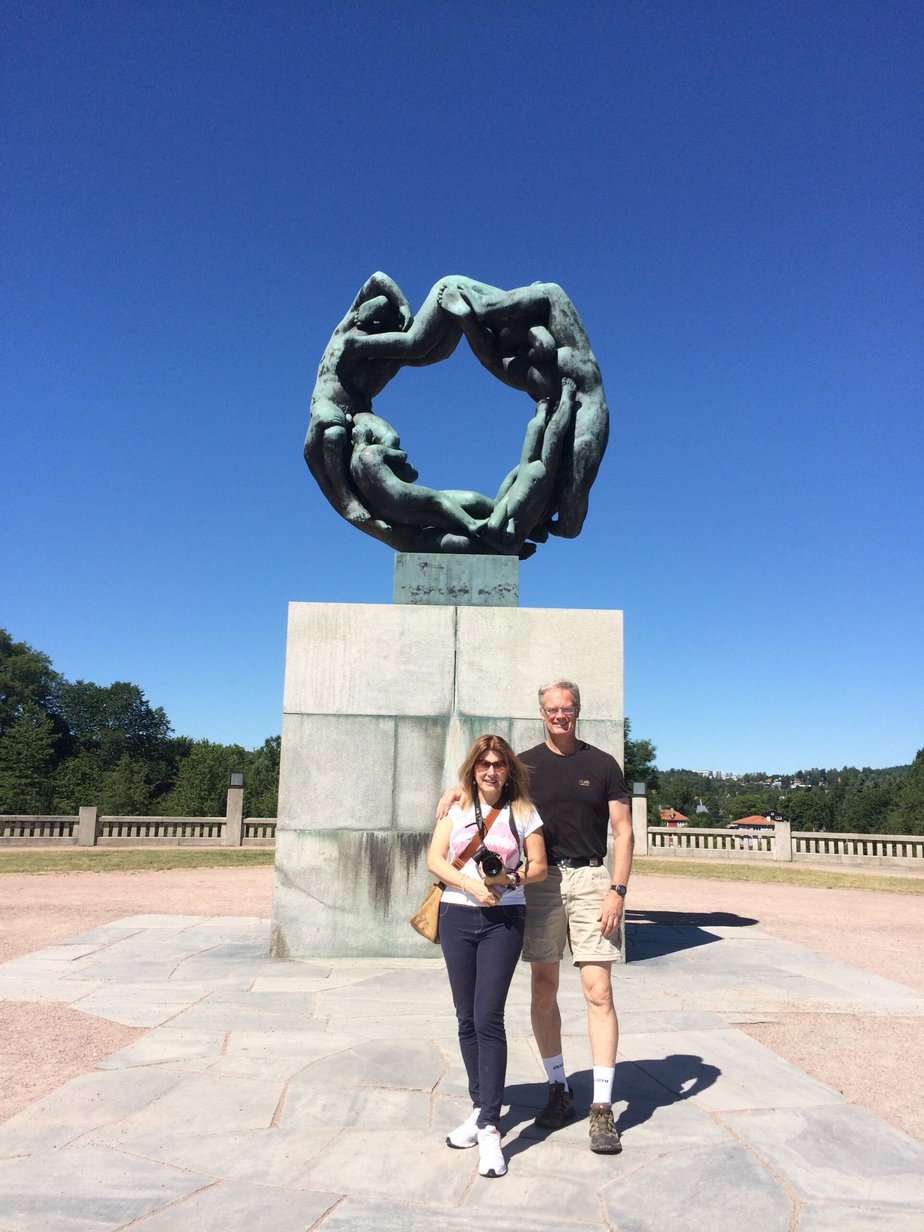
It mirrored the park’s theme which spoke to Vigeland’s — and Norway’s — quest for peace, harmony and respect for our fellow man. Statues were everywhere. Each one stranger than the next. A woman seemingly suspended, diving through a cluster of trees. The 14-meter Monolith, a giant granite tower made up entirely of sinuously naked men and women. Little Angry Boy, a solitary, fat child in the midst of a full-force tantrum. A man and woman entwined in what could be bipedal intercourse or domestic assault, depending on your mood while viewing it. A naked man holding a naked baby with his outstretched arms, leaving unanswered the question of whether he’s saving the child or throwing him into a ravine.
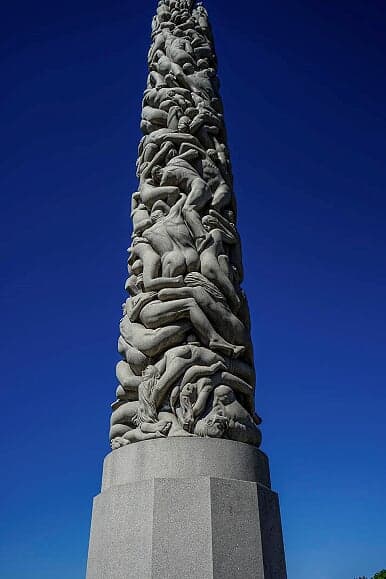
As we strolled through the park, a rock group performed a concert on a big stage in front of an entire fleet of old American automobile classics. Couples, both gay and straight, sunbathed by the lake. Near the entrance, a granite and wrought-iron gate with beautiful curved railings, a young man in a green helmet pogo sticked his way out the park. The whole experience was entirely weird. The only things normal were the massive throngs of snap-happy Asian tourists and the fat American with the New York Giants shirt and Yankees cap drinking a beer at the larcenously priced snack bar.
Oslo is also home to arguably the most famous painting in the world not called Mona Lisa. The Scream, Edvard Munch’s 1893 tribute to human dread, is in the Nasjonalgalleriet, the national gallery. It has become the subject of countless Facebook postings for anyone dreading a job review or reviewing their latest Internet date. Munch, one of the pioneers of Early Modernism, worked out of Oslo and Berlin and was fascinated by anxiety in the late 19th century when Oslo started urbanizing and life became brutally hard for families. In The Scream he painted a light bulb-headed unisex figure with his head in his hands, his mouth and eyes wide open in panic mode under a blood-red sky. Later in his career his works became more friendly and peaceful. But it’s clear what his message was and still is, considering the current state of the world.
Mankind is fucked.

Speaking of which, in Oslo, so is your wallet. The prices here are as high as the summer sky. It’s like the whole city is Rodeo Drive. They are insulting. And they’re relentless. Just like in Iceland, every time I paid for something I felt like bending over. Every bill in Oslo should come with lubricant.
At simple Fishtirik my salmon burger was $22. A glass of Spanish wine was $14. At Kafe Celcius, on a picturesque square near the harbor, a piece of salmon was $30. I wondered what it would cost if we actually had table service and didn’t have to order at the bar. At Vigelandsanlegget, a bottle of water was $4. Using the public bathroom cost $2.
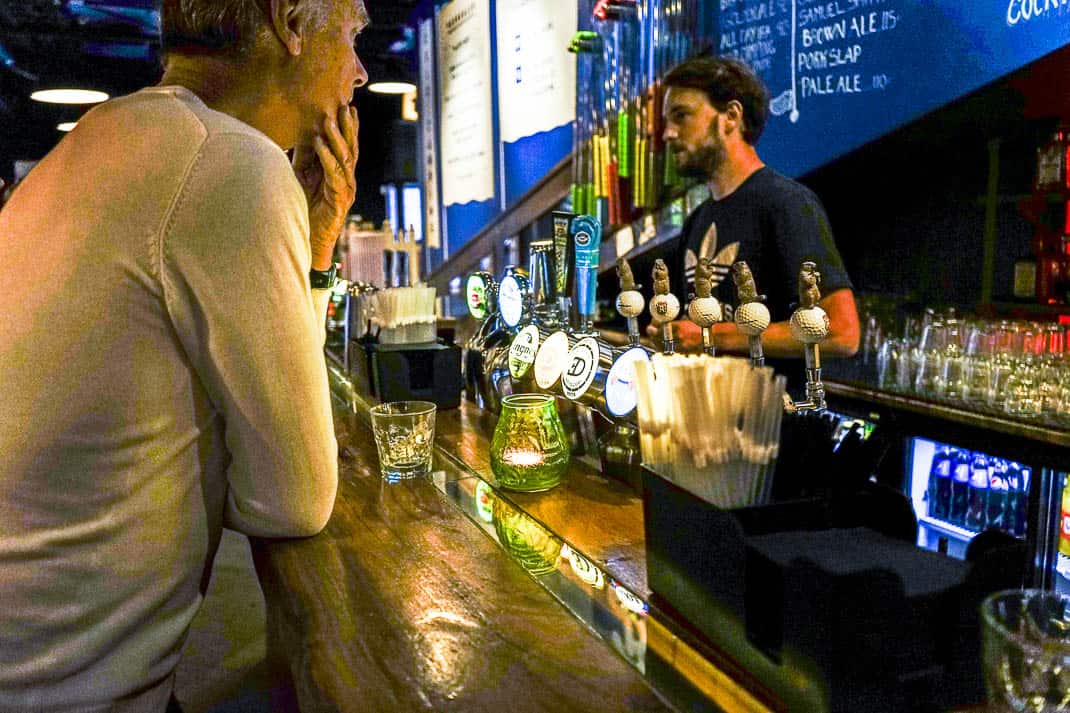
Beer, which is experiencing record sales during Norway’s heat wave, averaged about $12. At the Scotsman, my hangout for World Cup games, one craft beer cost 298 kroner. That’s $37 a glass. I asked the woman bartender simply, “How?”
“I believe they have beer that expensive in the States,” she said.
“No, they don’t,” I replied.
“You don’t have to buy that one, sir.”
“I won’t.”
How do men date in Scandinavia? I remember interviewing four men in a Reykjavik bar and asking them, “With fish costing $35 and beer $13, cocktails $20, how can you take out a woman?”
They all raised their glasses and with big smiles said simultaneously, “We don’t!”
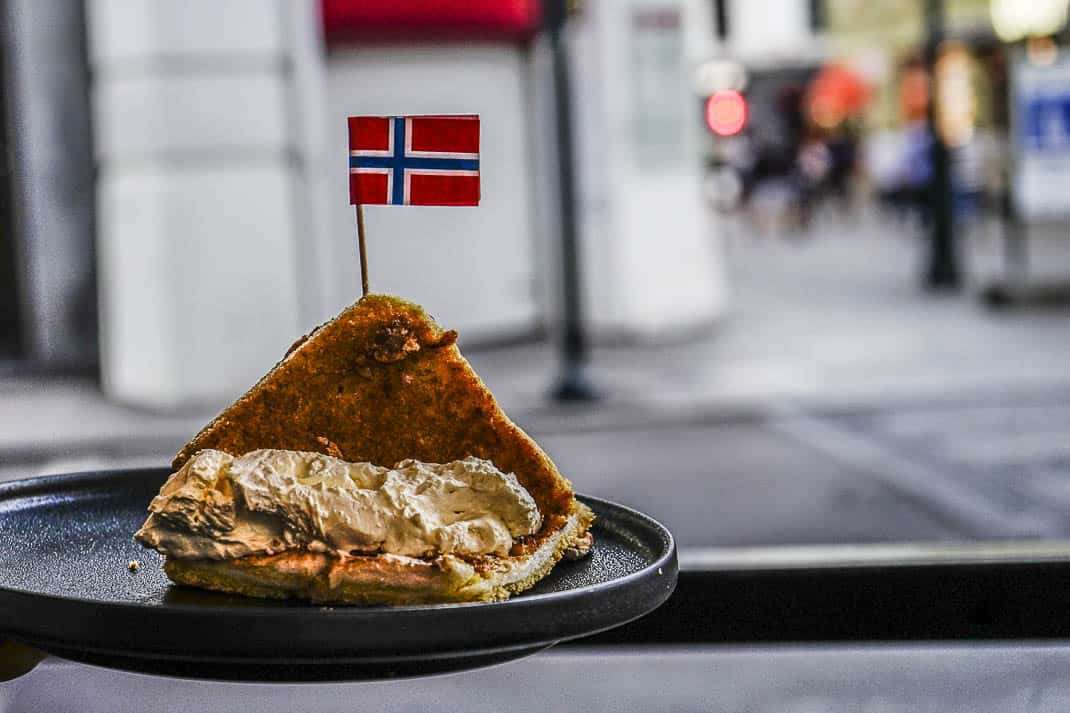
At least Oslo’s food is good. The salmon is fresh and is caught a short boat ride from your table. Cafe Cathedral’s Verdens Best (World’s Best), Norway’s national dessert made up of sponge cake, almonds and heavy cream, was one of the best treats I’ve had in Europe. Our breakfast buffet at the First Hotel Millennium in the center featured everything from smoked salmon to lean Norwegian sausage. The chevre salad at Jensens Bofhus near the Parliament rivaled any I’ve had in France.
As one right-wing columnist at my old Denver Post wrote about Pres. Bush’s reluctance to nationalize healthcare, “Utopia ain’t cheap, folks.” It applies better to Norway than the U.S. Oslo is not a cheap getaway. I don’t remember seeing any budget travel backpackers. But there’s a price to pay to visit a society so open, happy, healthy, peaceful and friendly. And the best part about Oslo’s best qualities?
They’re all free.

